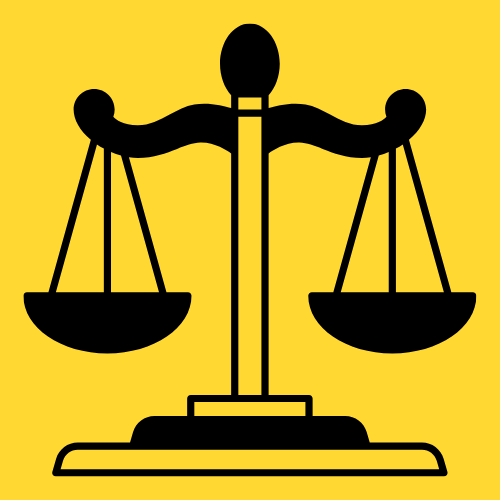Mbewa and Three Others v. R. Crim. Apps. 277/280-D-70; 30/7/70; El-Kindy Ag. J.
The appellants were charged and convicted of criminal trespass c/s 299(a) of the Penal Code and threatening violence c/s 89 (2) of the Penal Code. They were alleged to have entered the compound of the complainant a Community Development Officer and spoke adversely about Ujamaa Villages, threatening to kill people who would go to Ujamaa Villages and to kill the complainant himself. They were alleged to have carried knives, clubs and pangas with them. In the course of the trial, the public prosecutor said in respect of the one witness that he was telling lies and thereupon ceased to examine him and called another witness.
Held: (1) [Referring to S. 164 Evidence acts of 1977) “The court of Appeal in the case of Madafi Bin Rediba v. R. of S E. A. C. A. considered section 15 of the Indian Evidence Act – the material section being word for word similar to our section has this to say, at p. 55:- “The proper procedure is to apply for leave to treat a witness as a hostile, prove and put in the former statement and then put to the witness the passages which are alleged to be inconsistent with any part of his evidence which is to liable to be contradicted.” In this case, it was necessary for the public prosecutor to apply to the trial court to treat these two witnesses as hostile. The word in of one section 164(1) states that the impeachment of one’s own witness, cannot be done without the consent of the trial court. In this case, although, the public prosecutor said that the two witnesses were “hostile” he did not ask for leave of court to cross-examine them as he should have done to establish his allegation. And before he did that, it would have been necessary to prove that the witnesses had made statements in consistent with the evidence they were giving in court, and having done so, the prosecution may then put passages of their statements to them to show that heir evidence was inconsistent with what they have stated in their statements. It will be for the court of decide then, whether they were hostile or not. In this case, this was not done, and in the absence of this it cannot be said that two witnesses were in fact hostile. It may be worthwhile to take not of the commentary by Sukar on Evidence, 11th Edition at p. 1317, where in the learned author, after reviewing the previous decisions on the point, said; “Merely giving unfavorable testimony cannot also be enough to declare a witness hostile, for he might be telling the truth which goes against the party calling him. He is hostile if he tries to injure the parties’ case by prevaricating or suppressing the truth.” Applying this proposition, it will be seen therefore, that not every unfavorable evidence would amount to hostility. A witness will only be found to be hostile I he prevaricates or suppresses the truth in an attempt to injure the case for the side which called him. In this case it cannot be said that the two witnesses were trying to injure the prosecution case by prevarication or suppressing the truth, since it was not shown that they were so doing. In the circumstances, I agree that the exclusion of the evidence of Said and Chuma was wrong.” (2) Referring to s. 299(a) of the Penal Code) for an offence to succeed under this section the prosecution must prove (1) that the entry was unlawful, (2) that the entry was done with intent to commit an offence or to intimidate, insult or annoy the person in occupation. The learned defence counsel had argued that the offence intended to be committed must be a felony and not misdemeanour. I would respectfully defer. The word offence would include a misdemeanour in the absence of specific meaning. In my view, it is not necessary that the offence intended to be committed should be a felony. If the appellants had intended to commit the offence of threatening with violence contrary to section 89(2) (b0 of the Penal Code which is a misdemeanour, that would have
been sufficient for the purposes of the charges. It seems to me that the sentence would be enhanced if the offence is committed in places mentioned in the last part of the section and not because the offences were felonious as it was argued. And no doubt the entry has to be on private property, as it has clearly been held by this court in the case of Kombo s/o Haji @ Ngerengere v. R. H. C. D. No.225 of 1967. In this case, the complainant said that the appellants were in the premises of his house, but the learned counsel argued that this was too vague. I am satisfied that this was adequate to show that he appellants were in private premises of the complainant. I would therefore state that, had there been sufficient evidence, the charge of criminal trespass could have been sustained.” (3) “As for the charge brought under section 89(2) (b) the leaned counsel said that the intended breach of peace envisaged by this action was that akin to fire arms, and that, if that was the case then the evidence in his case did not establish this offence, but established an offence under section 89(1) (a) of the Penal Code. And that the difference between the two sections lies in the nature of the breach of peace, and therefore, the four appellants had not committed any offence under section 9(2) (b) of the Penal Code. At most he said, they used abusive language, which is not an offence by itself. I would quote the two sections: “89. – (10 Any person who- (a) uses obscure, abusive or insulting language in such a manner as is likely to cause a breach of peace, or (b) browls or in any other manner creates a disturbance in such a manner as is likely to cause a breach of peace, is guilty of a misdemeanour and on conviction therefore is liable to imprisonment for six months. (2) Any person who – (a) with intent to intimidate or annoy any person threatens to burn, break or injure any premises, or (b) with intent to alarm any person discharges a fire arm or commits any other breach of peace, is guilty of a misdemeanour and is liable to imprisonment for one year.” The appellants were charged under section 89 (2) (b) and in order to succeed, the prosecution has to prove that the charged person or persons had discharged fire arm or committed any other breach of peace, with intent to alarm any person. Here” any other breach of peace” has to be interpreted ejusdem generic with fire alarm. It is arguable whether holding pangas and sticks would be ejusdem generic with discharging of fire arm. The holding of pangas and sticks in themselves would not alarm anybody unless they are held in alarming manner but there would still be lacking herein the element of explosion and a sense of sudden threat of life; which can be inferred from the act of discharging a fire arm. I cannot therefore say that the acts alleged to have been committed by the appellants in this case would necessarily have failed to come under this provision of law, if there were available evidence that the actions were ajusdem generic with discharging of fire-arms.” (4) Appeals allowed, conviction quashed.

%20(18).png)
%20(10).png)



%20(28).png)

0 Comments
PLACE YOUR COMMENT HERE
WARNING: DO NOT USE ABUSIVE LANGUAGE BECAUSE IT IS AGAINST THE LAW.
THE COMMENTS OF OUR READERS IS NOT OUR RESPONSIBILITY.